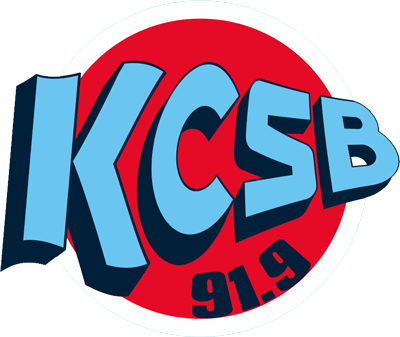Renée Fleming
[March 7, 2016]
By Alex Siegers / Edited by Shay Mehr
Renée Fleming is often referred to as ‘the people’s diva’, and after watching her perform at Campbell Hall as part of the UCSB Arts and Lectures Series, I understand why. Fleming’s performance was the perfect marriage of virtuosity, hilarity, flexibility and luxury. Even the unforgiving acoustic of Campbell Hall (with the aid of a skilfully placed partition) was no match for Fleming’s resonance and personality. Fleming’s program took the audience on a joy ride through what you could tell were some of her favourite works – the variety allowed Fleming to really show off her versatility, especially with her more recent forays into non-standard soprano repertoire.
I want to highlight the mastery of her collaborative pianist, Gerald Martin Moore. His sensitivity to Fleming’s interpretation was incredible to watch. He made the piano sing and brought out all of it’s wonderful colours with his delicate touch. I especially enjoyed watching Moore throughout the Rachmaninoff bracket, his fingers a blur as he flew up and down the keyboard. Aside from Fleming’s own virtuosity, it was a privilege to watch such an established accompanist at work.
The program itself was a wonderful compilation. Schumann’s Frauenliebe und-leben, a story of a woman’s love, was delivered with such control, and culminated in most sublime and stirring rendition of the final movement Nun hast du mir der ersten Schmerz getan. The audience was so keen to applaud that Fleming actually took a break after the fourth movement for applause, before resuming the work. The first half of the concert was rounded out with a selection of Rachmaninoff’s art songs. Fleming knows exactly how long to hold Rachmaninoff’s soaring notes – enough to make the audience melt, but not too long that it becomes indulgent, something sopranos are so often mocked for.
The second half of the concert was marked by a fabulous costume change by Fleming which revitalised the audience and prepared us for the more playful character of the this half’s music. I will be honest, I was very skeptical when I saw the Patricia Barber on the program. I am generally of the opinion that opera singers should stick to their genre, and in my experience, forays into jazz are unsuccessful and do not showcase the singers’ instrument in the best light. I was, however, happily surprised with Fleming’s interpretation, and the selection provided the perfect amount of comic relief to balance the intense poetry of the first half. However, there were moments that the music was begging for some real time feel and swing, especially in ‘Hunger’ and a more conversational vocal quality. There were glimpses of this in moment’s when Fleming controlled her vibrato in “You Gotta Go Home”, but I was left wanting. The inclusion of new works by a female composer in Fleming’s program totally outweighed these stylistic choices, and is something I was very excited about and something I hope to see more of in future recitals.
A short set of Strauss really highlighted Fleming’s virtuosity, and her love for the composer’s music was visible. Fleming was joyful and I couldn’t help but smile as she expertly navigated Strauss’ melodies. Her rendition of Zuienung was the perfect way to round out the set; soaring, composed and flawless. The final bracket was selections from The King and I. Fleming danced around the piano with total abandon, and had the audience whistle along to the crowd favourite “I Whistle A Happy Tune”.
Two encores were not enough for the audience who were hungry for all the Fleming they could get. O Mio Babbino Caro was a huge crowd pleaser, and Fleming was delightful to watch. The final offering was “I Could Have Danced All Night”, My Fair Lady. The soprano key wasn’t ideal for the audience sing along in the final chorus, but it was a great way to leave the audience on a musical high.
Fleming has an incredible way of relating to her audience and making music accessible. Her glances down to the floor (something that most performance coaches will discourage) are so perfectly timed, drawing her audience in to experience the most intimate moment, revealing a vulnerability in her character, making the emotions and story crystallise. Unfortunately many of these moments were disrupted by the unbearably loud audience. It may have been a virtue of the demographic of Sunday matinee concerts, or the way that Campbell’s unusual acoustics work, but the constant symphony of coughs, phones, mumbling and lolly wrappers made it very difficult to fully appreciate Fleming’s artistry. The ushers also had an frustrating habit of letting late comers into the auditorium right in the middle of a movement, which was totally insulting to Fleming who, as part of her opening spiel, explained that the audience should wait until the end of the work to clap, and that at that time late comers would be allowed to enter.
This is but one of the gripes I have about the the venue. The addition of surtitles was welcome for the Schumann, Rachmaninoff and Strauss; in German, Russian and German respectively, but having the surtitles running throughout the English items totally undermined Fleming’s delivery. Not only did they highlight the minor discrepancies between Fleming’s interpretation and the version in text, but in the bracket of works by jazz composer Patricia Barber, the humour that Fleming so artfully set up, was compromised as the punch line was often displayed on screen bars before Fleming had a chance to deliver them.
Overall it was an incredible honour to have musicians of Fleming and Moore’s calibre performing here in Santa Barbara. For the strong contingent of UCSB students who attended it was an inspiring and instructive insight into how the best of the best make music that gets audiences begging for more.

